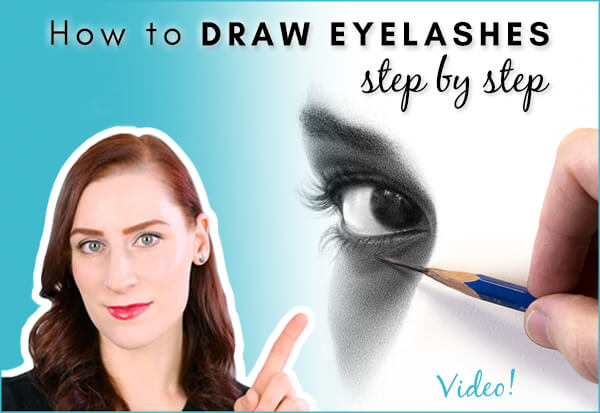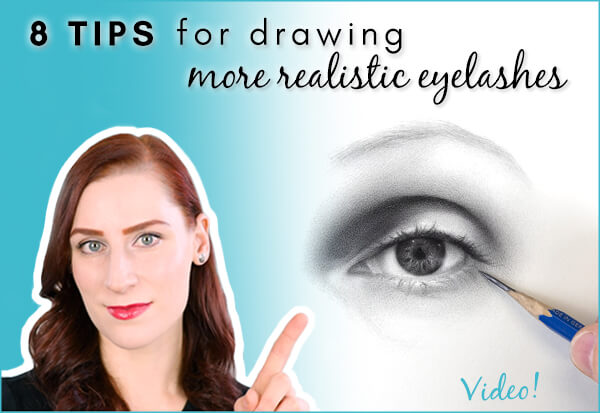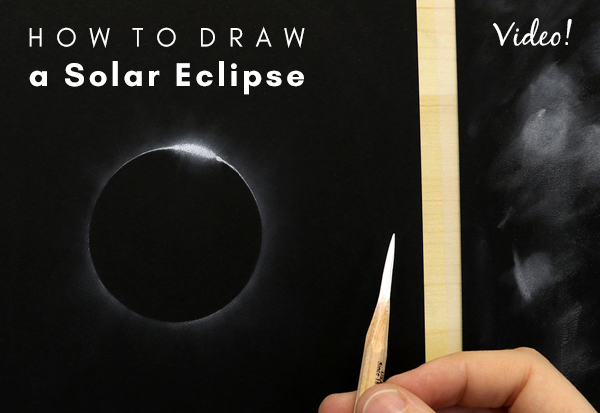- Home
- Drawing Tutorials
- Figure Drawing Proportions
7 Figure Drawing Proportions to Know

Throughout the ages, artists have been fascinated by the challenge of depicting accurate proportions of the human body.
There have been countless attempts to standardize figure drawing proportions and lay down proportional rules to follow when depicting the body.
However, observing how many systems of measuring proportions exist (or “canons” as they are called) should be our first indication of how open to interpretation proportions are, and that no single proportional system can be consistently accurate.
What are proportions?
Proportions are the
relationships, or ratios,
between the heights, widths and depths of a subject.
In order to draw a believable likeness of any subject, no
matter what or who it is, we must draw the proportional relationships as they appear on that specific
subject.
For example, in the drawing to the right, the height and width of the opening of the mug are fairly equal, while the depth is about a width and a half. These are the proportions specific to this mug in this particular scenario.
What would happen if I altered these proportions? The drawn mug wouldn’t quite resemble the mug I was observing, but it could still look believable and convincing.

In the case of a figure or portrait, however, accidentally
altering proportions can create very noticeable distortions that detract from the believability of your drawing. Minor inaccuracies in figure
drawing proportions decrease the likeness of your drawing, while major
inaccuracies may disrupt the logic of the body and cause it to look
anatomically inaccurate.
It’s no wonder that artists throughout the ages have tried to
standardize these measurements! It would certainly be convenient to be able
to rely on a memorized proportional system … but can we really rely on one of these systems no matter who we draw? To answer this question, let’s
look at a brief history of proportional canons.
A Brief History of
Proportional Canons
Every canon (system of measuring proportions) is a search for a certain ideal of beauty. However, as the idea of beauty is so subjective, fluid and ever-changing, so have the canons been throughout history.
For example, the celebrated Greek canon created by Polycleitus defined a strong, male athlete who excelled at gymnastics and in the handling of weapons.
A typical example of this canon is the Doryphoros, which is one of the best known sculptures of the Classical Era.
However, just as today there are few bodies that fit into current ideas of the “ideal” body, it is likely that few bodies in Polycleitus’ day fit the “ideal” body type of the Doryphoros as well.
 Roman copy of the Doryphoros
Roman copy of the Doryphoros
Another goal of canons is to establish a unit of
measurement to divide the body into more manageable, measurable
sections that would establish these “ideal” proportions. For example, in the
oldest known text on proportion, which was an Egyptian canon, the length of the
middle finger was chosen as the unit of measurement. It was thought to be equal
to one nineteenth of the total height of the body.

In the Greek canon by Polycleitus, the palm of the hand was chosen as the unit of measurement.
Marcus Vitruvius, a first-century BC Roman architect and writer, believed that the height of the figure was eight heads, or ten faces.
Leonardo da Vinci demonstrated many of Vitruvius' ideas on proportion in the well known image of the man in two superimposed positions inscribed in a square and circle: the "Vitruvian man".
Proportional Canons
of the Present Day
As you may have guessed, the search for a perfect measuring
system is rather pointless. There is so much variation in bodies among individuals that it is impossible for everyone to fit into any set of standards. The
unique qualities of each individual are part of the challenge, complexity and
fascination of depicting the figure. However:
Knowledge of a few general proportions can be helpful to our drawings if we
use this knowledge in combination with a sensitive observation of the model.
Today the most common unit of measurement is the head of the figure, and the figure is generally thought to be between 7.5 and 8 heads tall. (The head is also a great place to begin a figure drawing, which you can read about in the 5 Ways to Start a Figure Drawing article.)
What difference does 7.5 and 8 heads make?
The 8 head tall figure will have considerably longer
legs, such as those of a runway model or heroic action figure. A more realistic
figure is approximately 7.5 heads tall, though as I will continue to point out
throughout this article, these are generalizations and should not be accepted as rules.
7 Figure Drawing Proportions to Know
Before delving into the figure drawing proportions that I find most useful
to remember, please note that these proportions refer to a standing figure. When the figure leans toward or away from you, or sits or lies down, measurements become more complicated and sometimes obscured, and will often no longer fall into the proportions listed below.
F R E E D O W N L O A D
At the end of this article, get a free Figure Drawing Proportions to Know Infographic to use as a reminder of these basic proportions!
In a standing position, seven figure drawing proportions to keep in mind are:
1. The figure is approximately 7.5 heads tall.

2. About two heads down from the top of the figure is the line of the nipples.
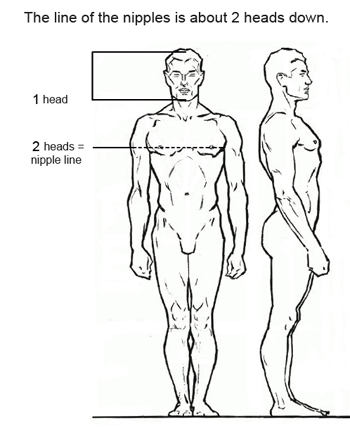
3. About three heads down from the top of the figure is the navel, or belly button.

4. About four heads down from the top of the figure is the pubic bone.

5. The pubic bone is approximately the half-way point on the body.
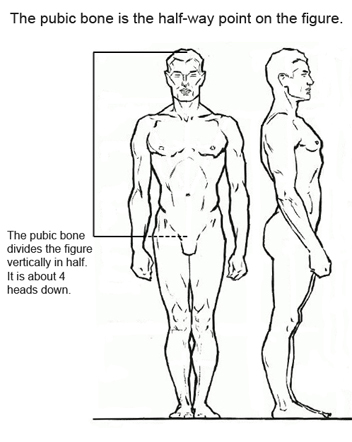
6. The wrists line up with the greater trochanters of the femurs (upper leg bone).
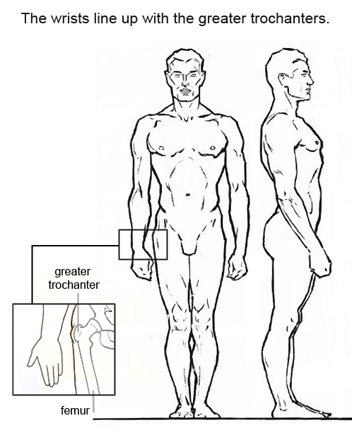
7. The elbows line up with the navel (belly button).
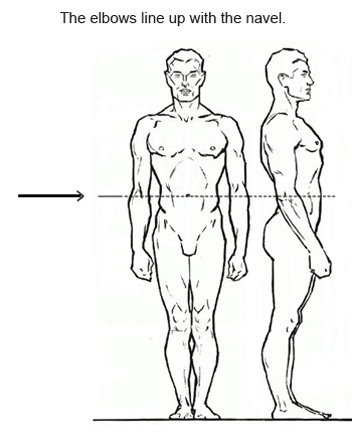
Pros
and Cons
of Using Proportional Systems:
Cons:
- relying heavily on memorized proportions can lead you to
become lazy in observing the model, which can result in generic drawings
- because there is so much variation in body types, no proportional system can be accepted as a “rule”
Pros:
- a proportional system gives you a general reference guide for assessing the relative lengths and widths of the body
- proportions can lead to more accurate and convincing drawings if they are used to compare to the proportions on the model
- memorizing certain figure drawing proportions can greatly help you draw from memory and imagination
- memorizing proportions can help you design figures – for example, an animator may intentionally choose to lengthen a figure to 8 or 8.5 heads tall if their intention is to draw a heroic figure
Using Figure Drawing Proportions Effectively
Interestingly, proportional systems can cause your drawings
to be more generic or more specific, depending on how you use them. How do we
achieve greater specificity and accuracy with our knowledge of proportions?
Instead of assuming that a model will have the exact proportions listed above, use them to check for variations on the figure. For example, if you know that the navel is usually three heads down from the top of the figure, measure and check to see if this is true on your model (as I do in this step by step figure drawing tutorial).
If it is not, through the process of measuring you will be able to determine how much higher or lower the navel should be than the three-heads-down point, and draw it where it appears on the specific individual that you are observing.
It is this heightened sensitivity that your knowledge of
proportions can bring to your observation that will make the difference in
your drawings, more so than using the memorized figure drawing proportions themselves.
I hope you enjoyed this page on figure drawing proportions! What next? Download the figure drawing proportions infographic below, and scroll down to view related pages that you might be interested in.
Happy Drawing!

F R E E D O W N L O A D
Download a free Figure Drawing Proportions Infographic
(plus, get a weekly newsletter and access to the Members-Only Drawing Resource Library)!
If you enjoyed this page on figure drawing proportions, you may also be interested in ...
Related Pages
5 Ways to Start a Figure Drawing
Step by Step Figure Drawing Tutorial
7 Studies to Improve your Figure Drawing
5 Proportions of the Face to Know
Return to Figure Drawing from 7 Figure Drawing Proportions to Know
Return to the Homepage from 7 Figure Drawing Proportions to Know






